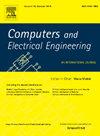A high-precision voltage sampling circuit for 14-series lithium-ion batteries utilizing an improved resistive level shifting technique
IF 4
3区 计算机科学
Q1 COMPUTER SCIENCE, HARDWARE & ARCHITECTURE
引用次数: 0
Abstract
In order to promote a low-carbon lifestyle, more and more electric bicycles are being put on the market. High-precision battery voltage sampling plays a vital role in the safe and reliable operation of electric bicycles. Based on improving the traditional resistive level shift circuit, this paper proposes a high-precision voltage sampling circuit for 14-series lithium battery packs. Voltage sampling is carried out by combining a High-Voltage Multiplexer (HV MUX) and a multiplexed resistive level shift circuit, and the current compensation circuit is designed to solve the problem of channel leakage current in the gate drive circuit when p-type and n-type Laterally Diffused Metal–Oxide–Semiconductor (LDMOS) are used as high-voltage switches. In addition, the influence of leakage current in the level shift circuit on battery voltage consistency and sampling accuracy is eliminated through the adaptive current compensation circuit, and the influence of operational amplifier mismatch on sampling accuracy is eliminated through chopper stabilization technique. Verify circuit performance based on 0.35m Bipolar-CMOS-DMOS (BCD) process, The results show that the maximum channel leakage current of HV MUX is 18.75nA, under the standard conditions of TT process angle and 27 °C, the maximum measurement error of the voltage sampling circuit is ±1.4 mV. Under comprehensive PVT verification, the maximum measurement error is 2.2 mV.

一种基于改进阻性电平移位技术的14串联锂离子电池高精度电压采样电路
为了提倡低碳的生活方式,越来越多的电动自行车被投放市场。高精度的电池电压采样对电动自行车的安全可靠运行起着至关重要的作用。在对传统电阻式电平移位电路进行改进的基础上,提出了一种适用于14串联锂电池组的高精度电压采样电路。结合高压多路复用器(HV MUX)和多路阻性移电平电路进行电压采样,并设计电流补偿电路,解决以p型和n型LDMOS作为高压开关时栅极驱动电路的通道漏电流问题。此外,通过自适应电流补偿电路消除了电平漂移电路中泄漏电流对电池电压一致性和采样精度的影响,通过斩波稳定技术消除了运放失配对采样精度的影响。基于0.35μm双极cmos - dmos (BCD)工艺验证电路性能,结果表明:HV MUX的最大通道漏电流为18.75nA,在TT工艺角度和27°C的标准条件下,电压采样电路的最大测量误差为±1.4 mV。在综合PVT验证下,最大测量误差为2.2 mV。
本文章由计算机程序翻译,如有差异,请以英文原文为准。
求助全文
约1分钟内获得全文
求助全文
来源期刊

Computers & Electrical Engineering
工程技术-工程:电子与电气
CiteScore
9.20
自引率
7.00%
发文量
661
审稿时长
47 days
期刊介绍:
The impact of computers has nowhere been more revolutionary than in electrical engineering. The design, analysis, and operation of electrical and electronic systems are now dominated by computers, a transformation that has been motivated by the natural ease of interface between computers and electrical systems, and the promise of spectacular improvements in speed and efficiency.
Published since 1973, Computers & Electrical Engineering provides rapid publication of topical research into the integration of computer technology and computational techniques with electrical and electronic systems. The journal publishes papers featuring novel implementations of computers and computational techniques in areas like signal and image processing, high-performance computing, parallel processing, and communications. Special attention will be paid to papers describing innovative architectures, algorithms, and software tools.
 求助内容:
求助内容: 应助结果提醒方式:
应助结果提醒方式:


